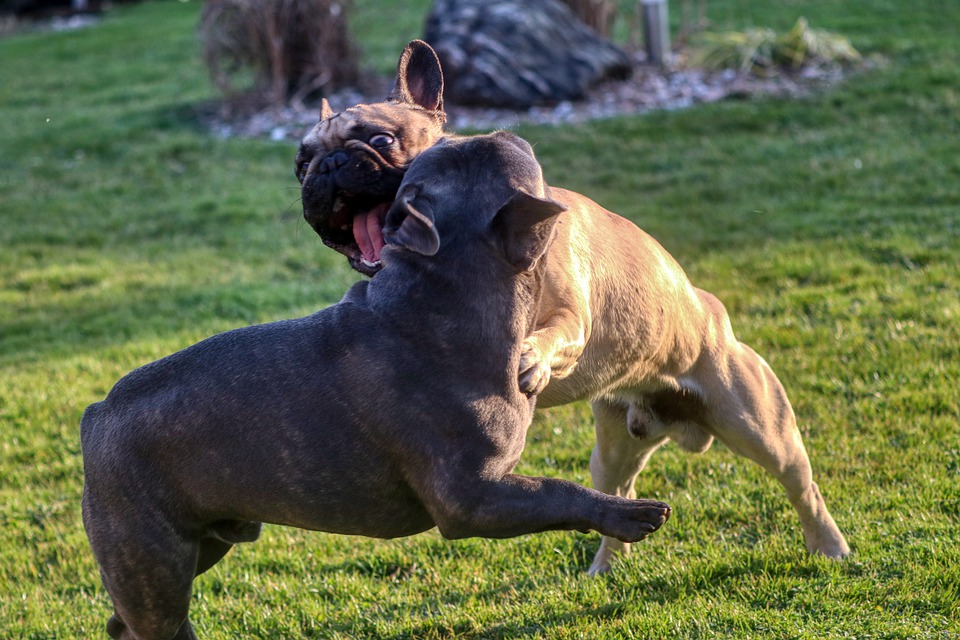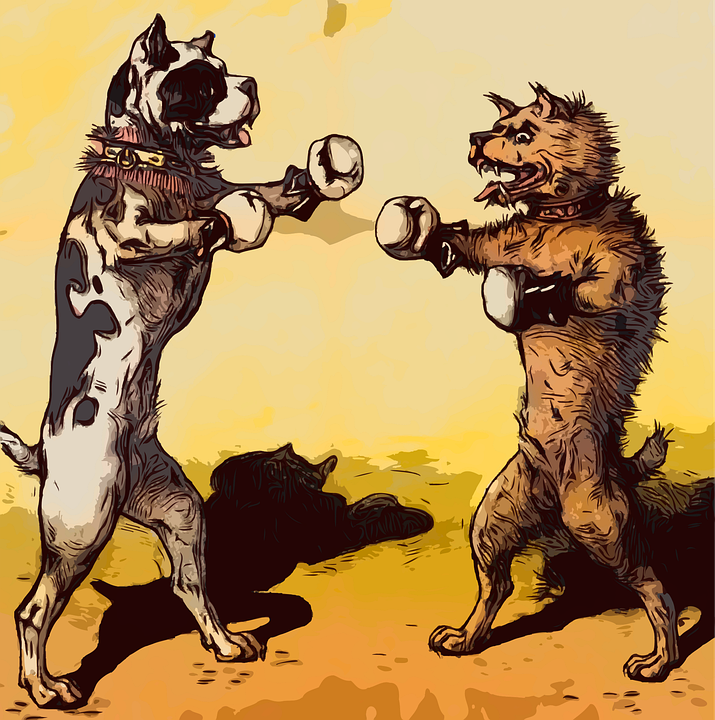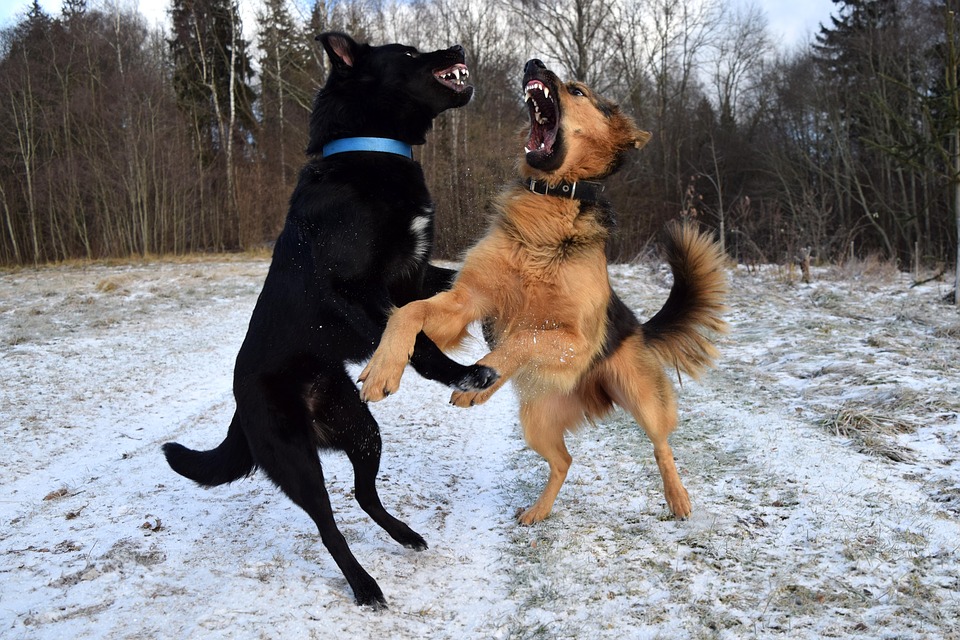Some of life’s hardest, and most important lessons, are those learned from experience. Today, we’re going to talk about something I have learned first-hand. I’m going to talk about the right and wrong ways to break up a dog fight.
Many readers are probably saying, “My dog is too well-trained … too friendly … would never get into a dog fight.”

You might be surprised to find out how wrong you are. Even the best trained dogs will fight in certain circumstances, just ask Prince Edward. In 2009, pictures appeared in an English newspaper of him holding a stick over one of his trained Lab’s during a hunt. Apparently the dogs had gotten into a squabble over a pheasant and the prince had to step in to break up the ensuing dog fight. Note: These dogs seemed well-adjusted and would probably have worked this one out on their own, but we’ll leave that discussion for another article.
Dogs fight for a variety of reasons – the desire for a dominant position in the “pack”, wanting something another dog has, improper breeding, poor socialization (towards other dogs, people or both), fear, pain and defending themselves against attackers are the most common.

We are going to assume that your dog is well-bred, content with his place in your “pack”, trained and socialized to perfection, confident and good health. In other words – a normal, well-trained hunting dog out for a good day of hunting.

Then he meets up with the dog that belongs to your new hunting buddy. His dog has some major problems. He was taken away from his litter-mates too early and didn’t learn to speak “dog language” as well as he needs to. He wants to be the god of the animal world and your buddy has been a bit too enthusiastic about using his new techno-toy (an e-collar) in his training. This has resulted in a dog who is living in a near constant state of low-level pain and agitation. All of this combines to create an unstable psycho-dog, who has just entered your dog’s life.

To make a long story short, Joe’s dog jumps your dog with little or no warning and your dog is forced to defend himself. Teeth are bared and flashing, the snarls and growls are escalating in volume and intensity and the dogs are locked together in what appears to be mortal combat.
The first thing you need to realize is that it does not matter that one of the combatants is the dog that sleeps with his head on your foot when you’re watching TV at night or has never bitten a soul in his life. You need to remember that, during a fight, this is not your loving and loyal companion. He does not see you as his trainer, his owner or his friend. He will not even remember that you are the one who feeds him every night or takes him on these glorious hunting trips. If you stick your hand or other part of your anatomy between him and the other dog, you are at best an obstacle to be moved (generally be grabbing it in his mouth and throwing it) or at worst another adversary.

There are proper ways to break up a dog fight and then there are the ways to try to break up a dog fight that will get you hurt, sometimes seriously hurt.

First, determine if intervention is actually needed. Are the dogs actually fighting (or fixing to fight) or is this mostly posturing to determine who the “top dog” is for today? Dogs can growl, snarl and posture to their heart’s content if they both understand proper “doggie” talk, one of them is willing to take a submissive role and the other is willing to accept his “surrender”. On the other hand, if the dogs are locked in what appears to be mortal combat and neither is giving ground, it may be time to take a more active role in stopping the carnage.
DO NOT grab the dogs’ muzzles or attempt to pry their jaws loose from the other dog. This will result in you getting bitten. DO NOT try to get between the two dogs. This, too, will result in you getting bitten and quite possibly mauled. Do not yell or scream at the dogs – this will only increase their level of excitement or anxiety. Do not beat on the dogs with sticks, boards, tire irons, etc – this will also increase excitement and will add additional pain to an already agitated dog’s overloaded sensory system.

The most effective way of breaking up a dog fight seems to be for each of you grab your dog by the rear legs and walk them backwards. Try to walk them in a circle – this keeps them slightly off-balance so that they don’t turn and attack you. Crate them or put them on a lead tied to a tree, but do not let them get back together. After a dog fight, it can take several hours for the “bad blood” between the dogs to subside (if it ever does).

Another method is to throw water on the dogs, though this actually seems to be dependent on getting some of the water into the dog’s ear canal. More effective, especially if the dog has a “grip” on his opponent, is to actually pour water into one or both of the dog’s ears. Even a water-trained retriever does not like water in his ears will generally shake his head. This will allow you to pull the dogs apart and separate them.
Again, whatever you do – DO NOT try to get between the dogs or shield one of the dogs with your own body. If you do, you could end up with dozens of stitches yourself. And take it from someone who knows – dog bites and stitches don’t either one feel good.
This article was submitted by ferretbiting.com or ADS which highlights how to deal with ferret biting if you have ferret as pets.
















